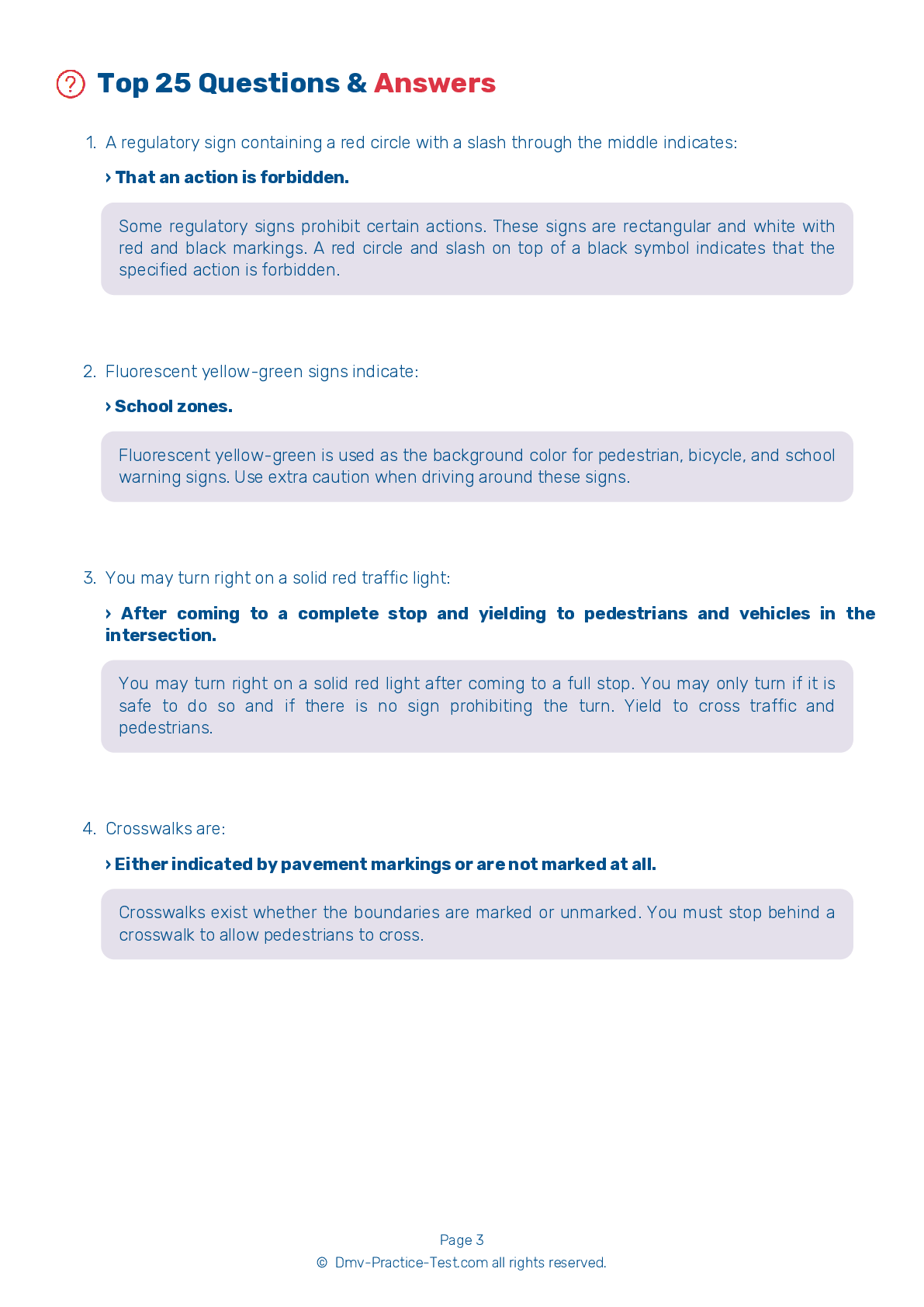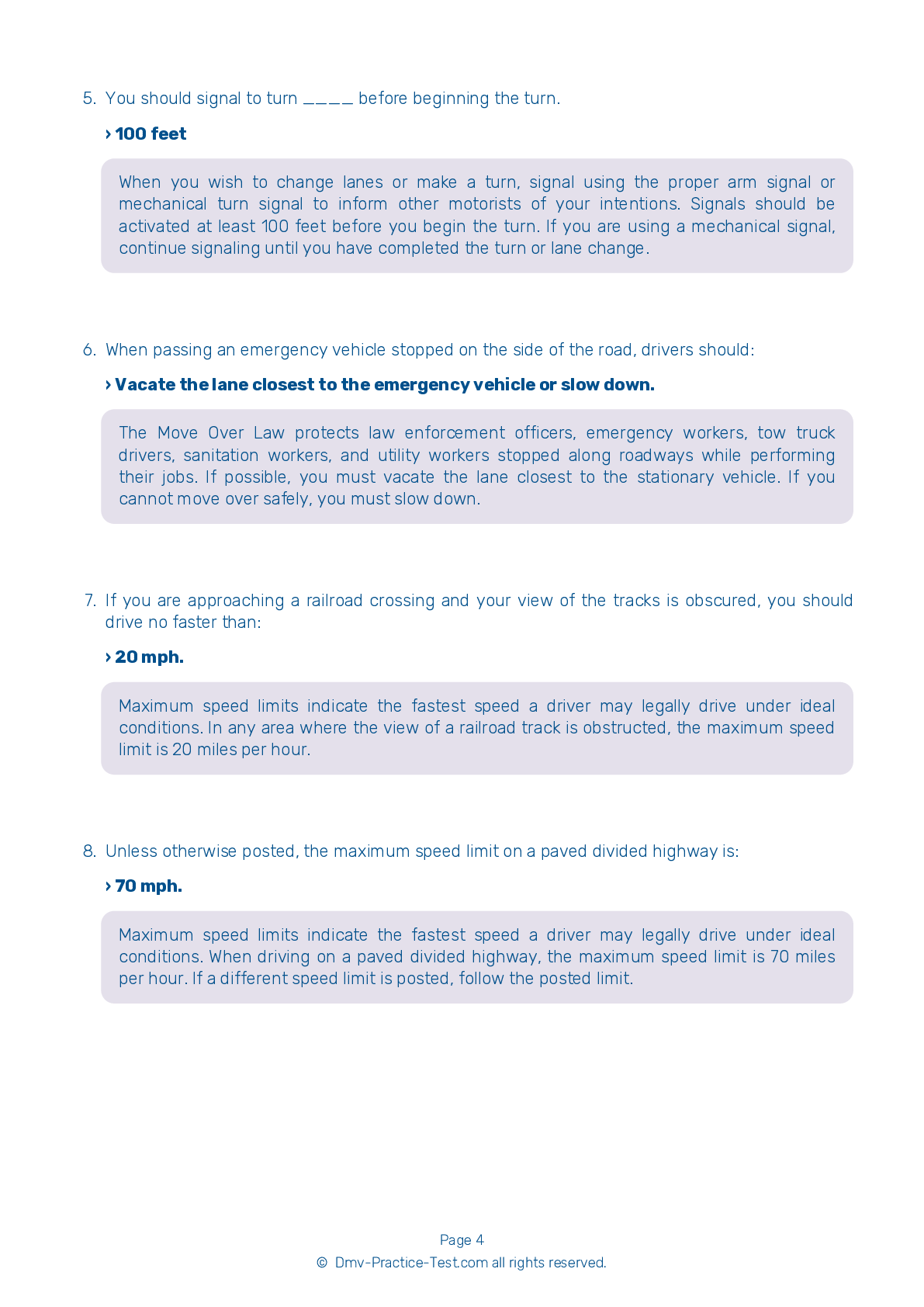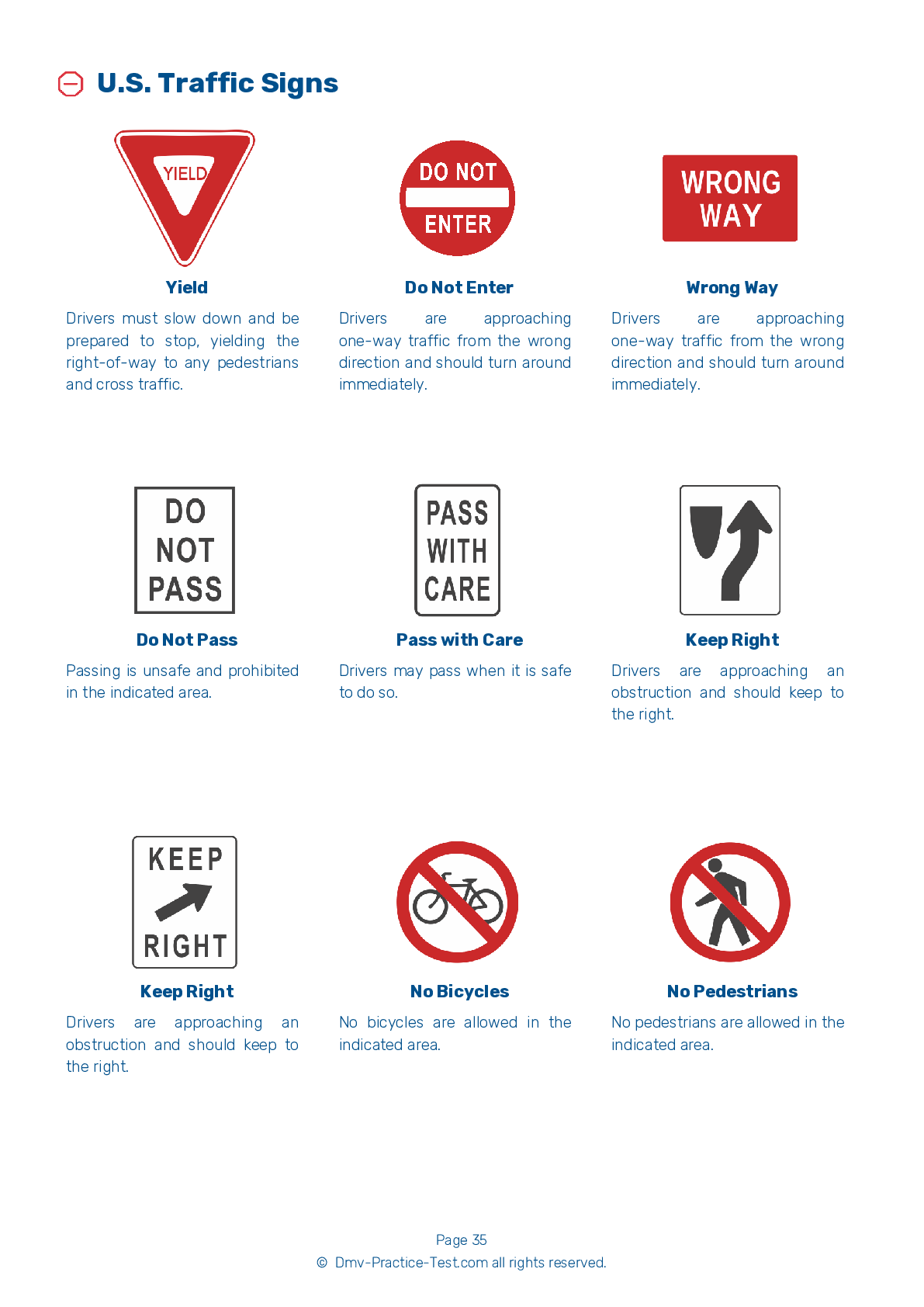FREE North Dakota DMV Practice Test #10 Page 2 of 4
North Dakota's DMV practise examinations have been updated for January 2025. It includes questions based on the North Dakota Driver Handbook's most essential traffic signals and regulations for 2025. Use actual questions that are very similar (often identical!) to the DMV driving permit test and driver's licence exam to study for the DMV driving permit test and driver's licence exam.
On the practise exam, each question gets a tip and explanation to help you remember the concepts. The written component of the official North Dakota DMV test will include questions about traffic rules, traffic signs, and driving statutes, as well as knowledge from the Driver Handbook.
To obtain a passing grade, you must correctly answer 20 of the 25 questions. Take this practise test from the North Dakota Department of Motor Vehicles to help you prepare for your instruction permit or driver's licence.
The DMV exam is available in several languages.
Using any kind of testing assistance will result in an automatic fail, and the DMV may take additional action against your driver's licence, so stay away from it.
7 . To avoid collisions with vehicles in your blind spots, you should:
Before turning or changing lanes, turn your head and glance over your shoulder in the direction of your move to see if your blind spot is clear. Never rely on your mirrors alone.
8 . If you become stranded in a snowstorm, the best thing to do is to:
If you become stranded in a snowstorm, the best thing to do is stay in your car and wait for help. You are most likely to be found if you don't leave your vehicle. Additionally, it may be unsafe to walk around outside in a snowstorm.
9 . If you see this sign, you:

Regulatory signs are white, rectangular signs with black markings. Drivers must obey the instructions posted on all regulatory signs. Where this sign is posted, it is prohibited for drivers to pass one another.
10 . When faced with an oncoming car to the left and a bicyclist to the right, you should:
When there is more than one potential hazard on the road, you should ensure that you only have to deal with one of them at a time. For example, when there is a bicyclist on the right that you want to pass and an oncoming car to the left, you should not try to squeeze between both at the same time. Instead, let the oncoming car pass, and then pass the bicyclist.
11 . This sign means:




